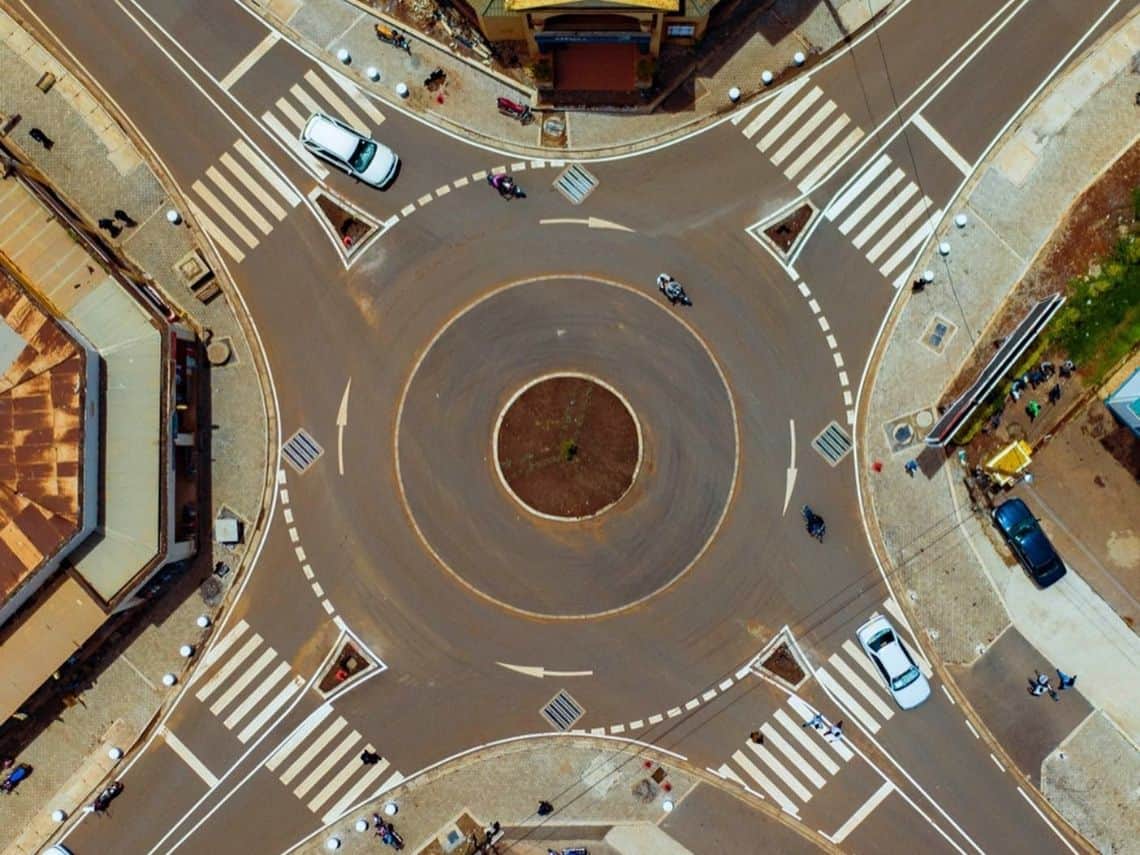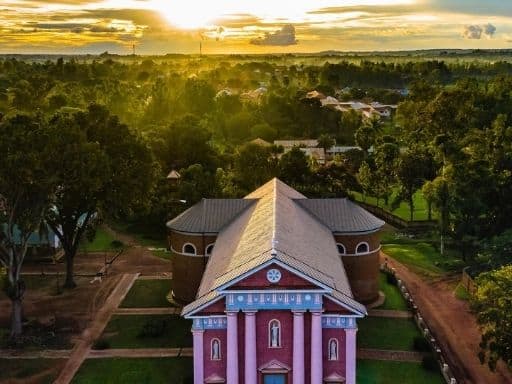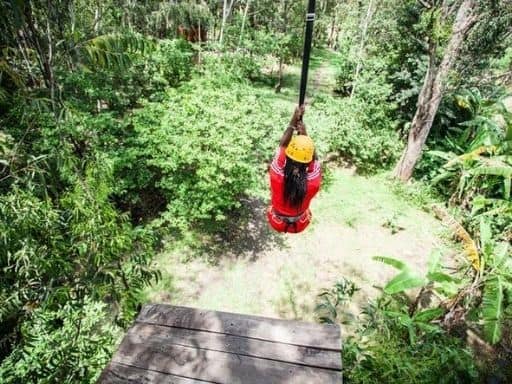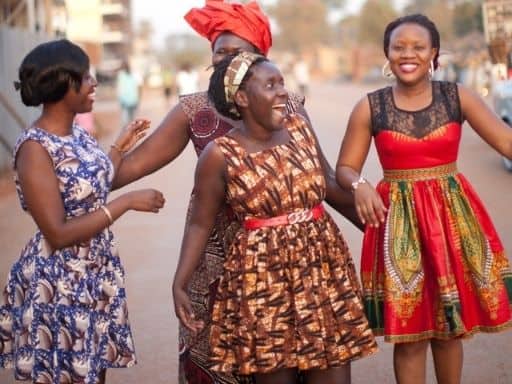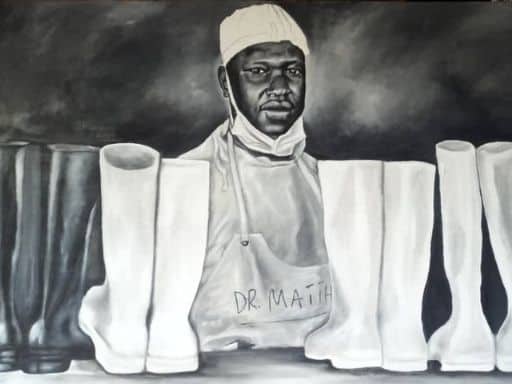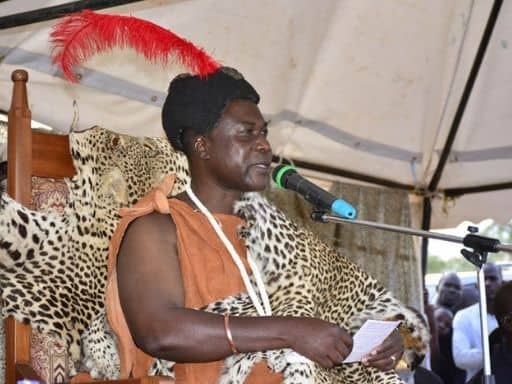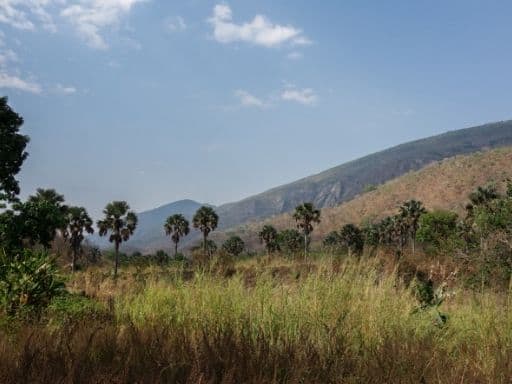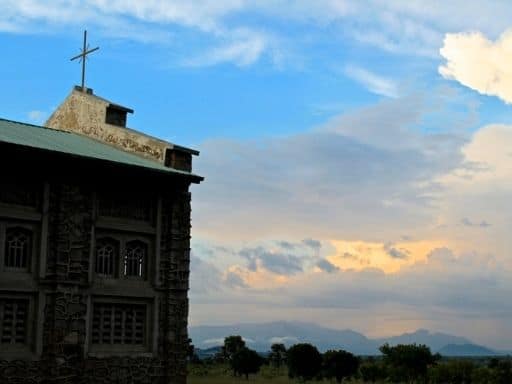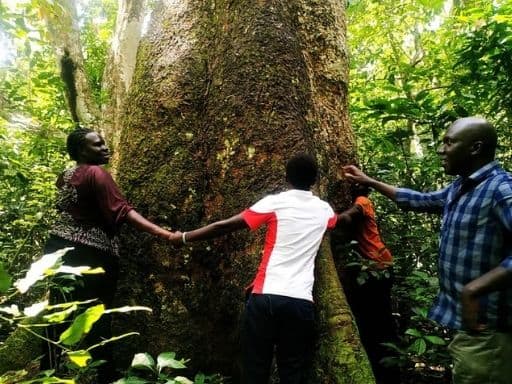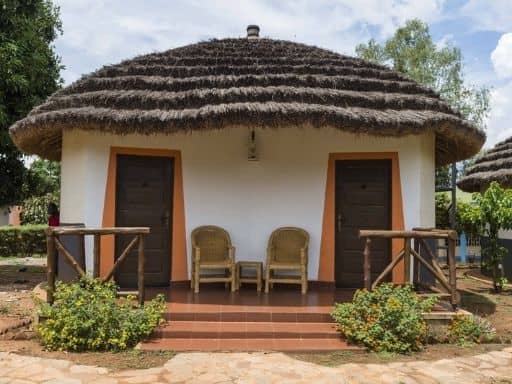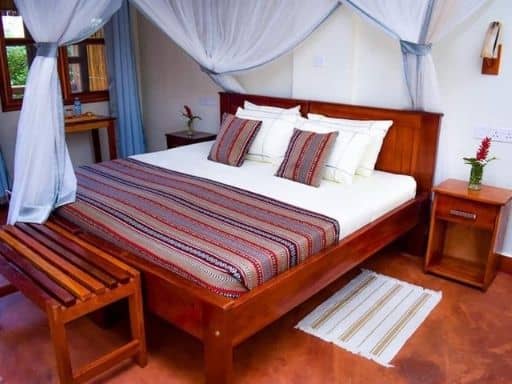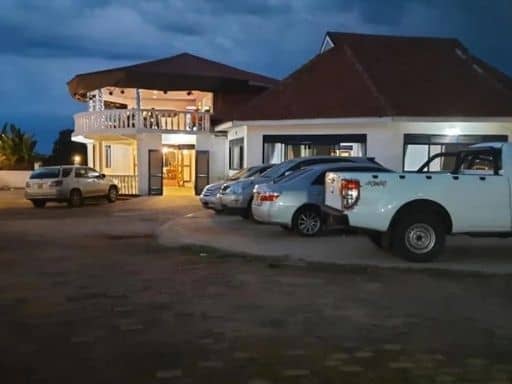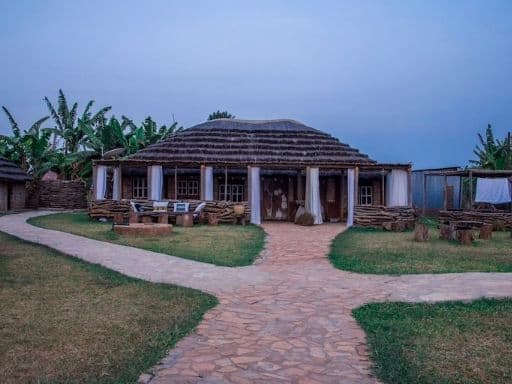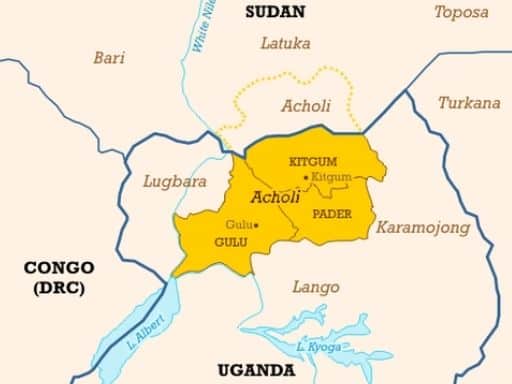Gulu, Uganda: Everything You Need To Know Before Visiting PLUS 20 Things To Do In Gulu
Gulu, Uganda is a newly commissioned city, though development has been rapid in this area over the past decade. Use our guide to explore some of the best things to do in Gulu city and the surrounding area.
Gulu, Uganda History
Gulu, and much of the northern region of Uganda, have a dark past. The events have had a lasting impact on the people, culture, environment, and politics among other things.
Starting with the British rule in the 18th and 19th centuries, people from northern Uganda were used as soldiers and police. Many of these soldiers were sent to fight during both World War 1 and 2. The area was deprived of other opportunities leading to the area becoming less developed compared to the rest of the country.
After Uganda’s independence in 1962, the situation did not improve in the region. Between the influx of refugees and political changes and conflict, there was also a two-decade-long war in the region.
Gulu is, unfortunately, well known because of the Lord’s Resistance Army (LRA) and their leader Joseph Kony. The LRA began in 1989 as a religious movement to overthrow the government before turning into a violent rebel group that became notorious for abducting and utilizing child soldiers.
Tens of thousands of children from the region began fleeing to Gulu each night for safety. In 1996, the Ugandan government also ordered all civilians in northern Uganda into internally displaced persons (IDP) camps until their closure in 2009. People have since returned to their homes and rebuilt their lives in the post-conflict area.
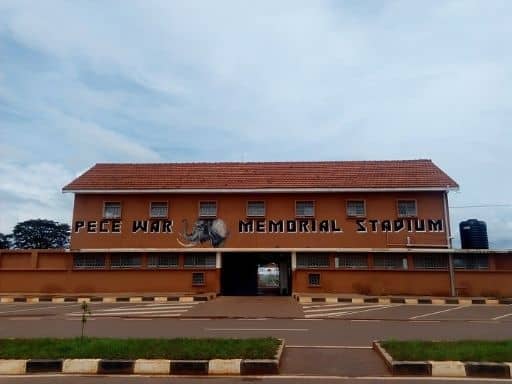
Is Gulu, Uganda Safe?
Since the departure of the LRA, Gulu is calm and stable. In fact, we feel Gulu may be one of the safest cities in Uganda.
Does crime still happen? Yes. Much of the crime can be prevented through simple common sense actions.
Keep a watchful eye on your bag while traveling or sitting at a restaurant. Put your phones and valuables away while dining out, walking, and while on boda bodas. These two things can help you to avoid petty thieves and snatch and grabs.
20 Things To Do In Gulu, Uganda
1. The Recreation Project
If you’re looking for an exciting way to spend the day in Gulu, then you will want to head to The Recreation Project.
This organization was started to address the adverse childhood experiences and trauma children faced in the region post-conflict. Through outdoor adventure and transformative play, The Recreation Project helps young people to be vulnerable, recognize and respond to emotions, and discover their own resilience and strength.
This five-acre forested property houses a 30-meter climbing wall, high and low ropes courses, a leap of faith, zipline, and more.
You can work with the staff at The Recreation Project to host a retreat, create a custom team-building experience, or attend one of their events to enjoy all of the outdoor activities on site.
2. Main Market
The Gulu Main Market is a one-stop shop. You can easily spend an hour or two walking the massive three-story building and all of the additional shops that have taken over the parking lot.
If you plan to visit the main market it may be overwhelming with all of the sounds, smells, and things to look at. Here’s a quick rundown of where you’ll find everything:
First Floor
This is where you will find all of the produce. In addition to all of the vegetables and local fruits, there is an entire section of bananas.
At the back half of this floor, there is a section dedicated to meat and dried and fresh fish. You can find butchers selling cuts of meat as well as some chickens for sale.
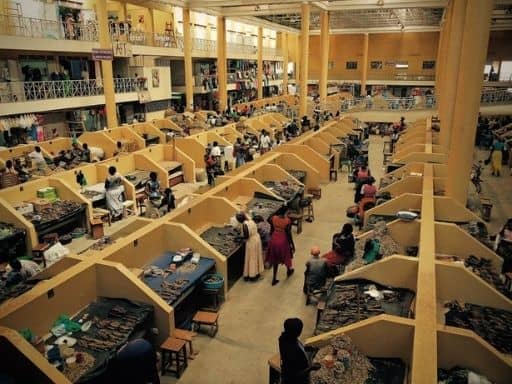
Second Floor
If you are inside the market, you can use the many staircases to get to the second floor. If you are outside the market, you can reach the second floor by using the ramp or coming from the doors on the far right side of the building.
On this floor, you will find dry goods. This includes beans, rice, seeds, flour, as well as honey, odi (the local peanut butter), moo yaa (shea), among other goods. You will also find some produce sellers and people selling everyday goods like salt, seasonings, cooking oil, soap, and other home essentials.
If you follow the indoor balcony to the far left side of the building, this is where you will find all of the tailors and crafts. Along the way, you can also find people selling clothes or doing hairdressing in shops.
Third Floor
The top floor is where to go if you’re looking for shoes and clothes. These are usually all new clothes and shoes (not second-hand) so they will be more expensive than what you will see in other areas of the market or outdoors.
Towards the center of this floor, you will also find The Art Factory. This is run by an artist named Ivan. He sells all of his painting and mixed media there and offers classes for those looking to take home a painting of their own.
3. Shopping
If you can’t find what you’re looking for at the main market, there are TONS of local artisans in Gulu, Uganda.
Many of the artisan shops in Gulu were started after the war as a way to support women. They have continued to thrive not only because of their mission, but their products are high quality and loved by those here in Uganda and abroad.
Here are some of our favorite brands:
4. Eat
If you are traveling to Gulu, Uganda then we highly recommend trying the local food. Matoke (plantain bananas) is not traditionally eaten in the northern region.
In Gulu, you will find olel, or pasted food, made with odi, the local peanut butter. You will find malakwang and boo which are both local greens that can be pasted. There are also local dishes like akeyo (greens), lakotokoto (ground sesame), and lapena (peas) that would satisfy both vegetarians and meat eaters.
For those looking to try animal based dishes, we recommend trying molokony. This dish is made with cow hooves and produces a rich, nutritious soup. You could say it is the original bone broth. If you enjoy the pasted vegetables, then you may also enjoy the pasted meat. Our favorite is smoked meat (either beef or goat) with olel.
All of these dishes are eaten with “food”, or a carbohydrate, like rice, sweet potatoes, cassava, kwan kal or kalo (millet bread), or posho, a playdoh like bread made from maize flour.
Of course, there are a lot of other non-local options for food as well. Check out Abyssinia for the best Ethiopian food, The Northern Peal for Indian food, or one of the many Western restaurants in Gulu.
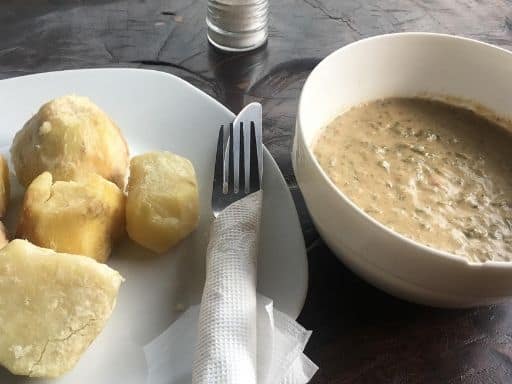
5. Night Out
COVID-19 lockdowns and curfews have put a long pause on Gulu nightlife. Currently, there are discussions about a full reopening of the economy in January 2022. We hope that this means a return to clubs and dancing!
If you are looking for where to spend a night out, there are a few places that we recommend checking out:
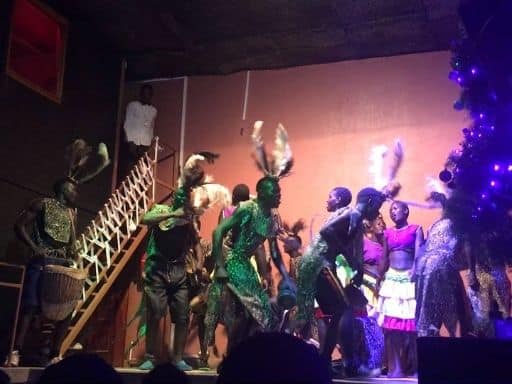
6. TAKS Centre
Through Art Keep Smiling or TAKS Centre, is a space for art and culture.
Once a colonial clubhouse for the British, this space has been transformed and run by the community for the community. The large garden compound is a quiet space to meet up with friends for a drink or snack or get some work done. Inside the centre you can find a small gift shop and various activity rooms used by the community.
TAKS Centre also hosts great events like dance competitions and concerts. This is a great opportunity to see local artists and traditional and modern dance troupes.
7. Visual Arts
In addition to the musicians and dance troupes, there are a number of visual artists to check out in Gulu, Uganda. Some of the most popular visual artists in Gulu are:
For more talent in the region, check out Northern Uganda Visual Artists.
8. Swimming
Gulu, Uganda can get quite hot, especially as the dry season draws on. One of the best ways to cool off is a trip to the swimming pool. There are a couple of options for swimming in Gulu:
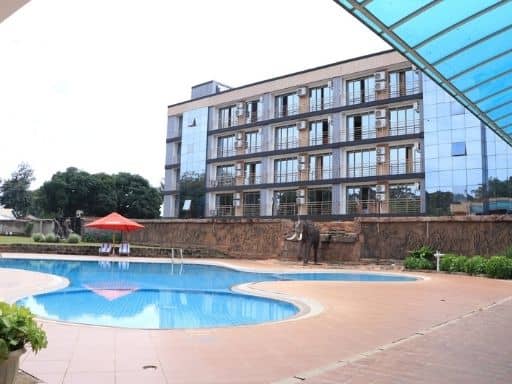
9. Chobe Safari Lodge
If you are looking for a luxurious day trip from Gulu, we highly recommend a stop at Chobe Safari Lodge. You will have your breath taken away by the gorgeous three-tiered pool that overlooks the Nile. In 2011, CNN listed Chobe’s health club gym as having one of the most amazing views in the world.
A trip to Chobe is approximately one and a half hours drive south from Gulu. It is recommended that you drive or hire a vehicle for the trip because you will have to enter Murchison Falls National Park to get to the hotel. Hiring a vehicle from Gulu to Chobe for the day should be around 200,000 Uganda Shillings.
Chobe usually offers a day trip package for swimming and lunch to outside guests. We have paid $20 and $40 per person in the past. It is highly recommended to call the hotel prior to planning your trip to ensure they are allowing outside guests (due to COVID SOPs) and the cost of the swimming and lunch package.
Usually, you let the Uganda Wildlife Authority rangers at the entrance gate know that you are going to swim and eat at Chobe for the day. They will allow you to enter without paying national park fees. Remember to get your receipt from Chobe to present to the rangers when exiting, or you will have to pay the park entrance fees.
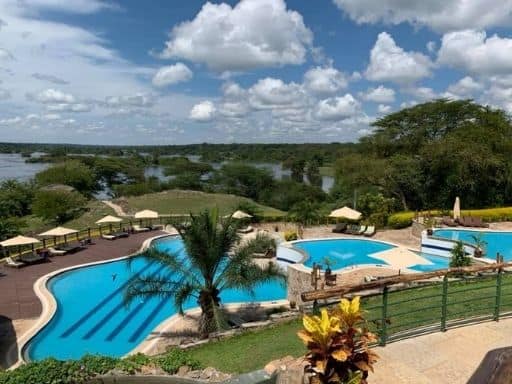
10. Fort Patiko
Aside from the national parks, there are not many developed tourist attractions in Northern Uganda, which is really unfortunate given the beauty and culture of the region.
Fort Patiko is one of the most developed tourist attractions near Gulu. Approximately 30 kilometers outside of the city, Fort Patiko, also known as Samuel Baker’s Fort or Fort Baker, is a historical and cultural site for the Acholi people.
This area was once a convenient slave-trading venue created by the Egyptian Arabs. Before “discovering” Murchison Falls, Sir Samuel Baker and his wife encountered Patiko. Baker built a military fort in order to stop the horrific slave trade.
We highly recommend traveling to Fort Patiko to get a historical tour and explore the fort and caves. You can also climb the adjacent hill for spectacular views of the surrounding area.
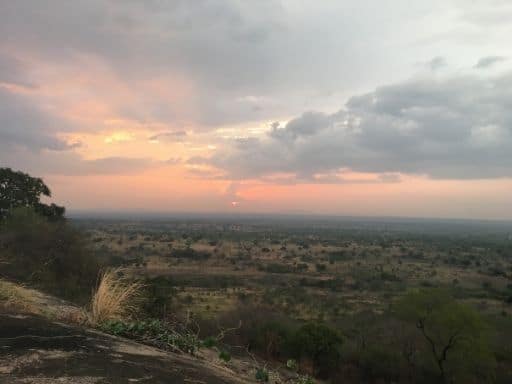
11. Ziwa Rhino Sanctuary
The rhino population in Uganda dramatically dropped due to poaching and previous civil conflict. Ziwa Rhino Sanctuary is currently home to 32 white rhinos. While there are no rhinos living freely in any of the national parks, there are plans to release the sanctuary rhinos into the wild when their population is large enough.
At Ziwa you will have the opportunity to explore the sanctuary with a ranger guide. You can track these magnificent and endangered rhinos on foot to see them in their natural habitat. There are also activities at the sanctuary for birding fans. Over 300 species of birds live in the sanctuary, including the elusive Shoebill Stork.
Stay At Ziwa Rhino Sanctuary
If one afternoon of rhino trekking isn’t enough for you, make plans to stay a night or two. Ziwa Rhino Sanctuary offers affordable accommodation, including camping, backpacker, and bed and breakfast options on site. If you are looking for a little more luxury, check out accommodation at Amuka Lodge.
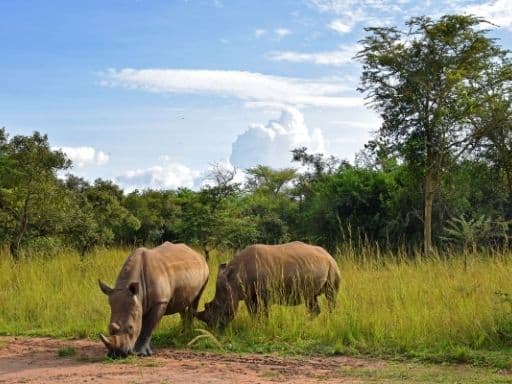
12. Aruu Falls
Located in Pader, Aruu Falls is a spectacular natural wonder near Gulu, Uganda. Surrounded by an ever-green forested backdrop, Aruu Falls roars down the staircase rock formation. The site is still a mystery to many of the locals, but its beauty and refreshing escape from the heat are no secret.
If you plan to make your way to Aruu Falls to enjoy this not-so-hidden jewel yourself, you can opt for a day trip or overnight camping. The area has recently been privatized, which has brought more development and accommodation options for tourists.
Visiting Aruu Falls is best during the dry season. During the rainy season, the water level increases dramatically, as well as the current, which can become dangerous.
Lesser Known Things To Do In Gulu, Uganda
Because these attractions are not as developed, we highly recommend going with a local guide who knows the areas and has contacts who show you around and explain any important information or history.
Our go-to guide, especially in the northern region is Northern Nature Safaris.
13. Gulu Museum
The Gulu Museum is located at Ker Kal Kwaro. This cultural centre is also the home of the Acholi Paramount Chief who safeguards Acholi heritage.
At Kal Kwaro Acholi (KKA) there is a large hut to the left of the entrance gate. You can meet cultural leaders to learn about Acholi heritage, see ancestral artifacts, and learn about protocols should you meet the Acholi Paramount Chief.
14. Peace Museum
The Open Peace Museum is located in Kitgum, 100 kilometers from Gulu. This museum serves as both a peace and war archive to memorialize the victims of the civil conflict in northern Uganda. Inside the museum are a collection of testimonies and stories of the war that you can browse and reflect on.
The open layout of the museum is symbolic of the exhibition. The path connecting the different buildings is representative of the connecting of the stories and events of the people, without imposing a single narrative.
Another aim of the museum is to promote indigenous cultural practices for peace and reconciliation. These practices and traditions, like mato oput, were important parts of the peacebuilding process after the LRA conflict.
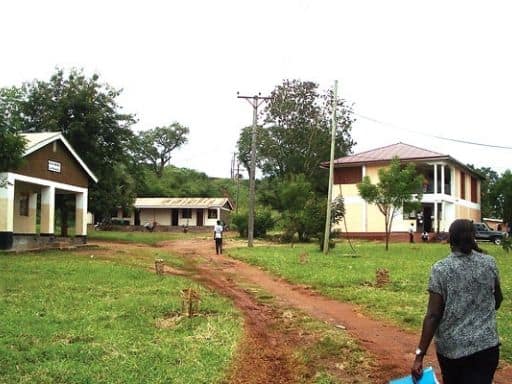
15. Amuru Hot Springs
Located approximately 35 kilometers from Gulu, the Amuru hot springs are the largest in northern Uganda. The springs are believed to hold healing powers, though today they are used mostly for enjoyment and livelihood by the community.
The hot springs hold up to their name. Areas of the water are quite hot, especially for those who may not be used to the water. There are some clear areas near the spring to walk or have a picnic with friends if you want to enjoy the surrounding natural landscape.
16. Guruguru Caves
Also located in Amuru, Guruguru Hill is a historical site near Gulu, Uganda. You can hike the hill and explore the many caves at Guruguru.
This site is famous for the Lamogi rebellion in 1911. The rebellion started because British colonialists wanted to register all of the guns owned by the Acholi people. This demand was not welcomed, and the Lamogi people decided to hide in the caves with their guns and bow and arrows.
The colonialists followed the Lamogi people to the caves and shot a senior bodyguard of the local chief Rwot Otto Yai. This led to retaliation by the Lamogi people who killed a missionary soldier named Captian Tana.
Catholic missionaries reacted to this killing by bombing the rocks and poisoning the water source. Many of the locals were killed which forced Rwot Otto Yai to surrender.
Aside from the historical and cultural significance of the site, the top of the hill offers breathtaking views of Amuru.
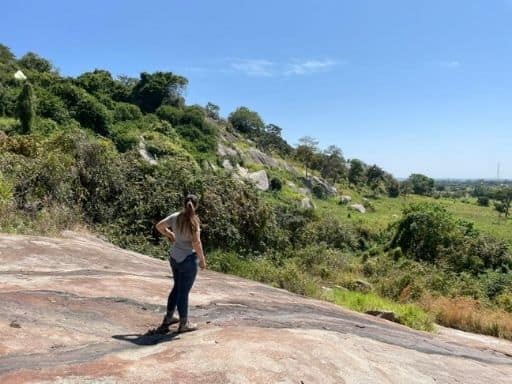
17. Otzi Forest Reserve
Otzi, Otze, Otce, Oce…there are many different spellings that you find for this forest reserve. Although it is technically in the West Nile region, it is still easily accessible from Gulu. Located in Moyo, you will need to take a short ferry ride across the Nile during the 150 km trip.
The Otzi Forest Reserve was originally gazetted in 1938 as a space for the Northern White Rhinos. Since then, the rhinos have moved into South Sudan, and the reserve remains a diverse ecosystem of 261 tree species, 168 bird species, and other animals. In fact, the Nyeri range in the Otzi Forest Reserve is home to the only chimpanzee population in northern Uganda.
The Otzi Forest covers a series of slopes overlooking the Nile river with South Sudan creating its northeastern border.
18. Mount Otzi Hiking
While enjoying the flora and fauna of the Otzi Forest Reserve, you should make time to hike Mount Otzi. At 1,563 metres, Mt. Otzi offers stunning views of the Nile. You will also be able to see the surrounding mountain ranges that straddle the border of Uganda and South Sudan.
Mount Otzi has steep slopes and rugged terrain. Although this region is quite hot, the vegetation from the woodland and forests provide a cool escape from the heat during your hike.
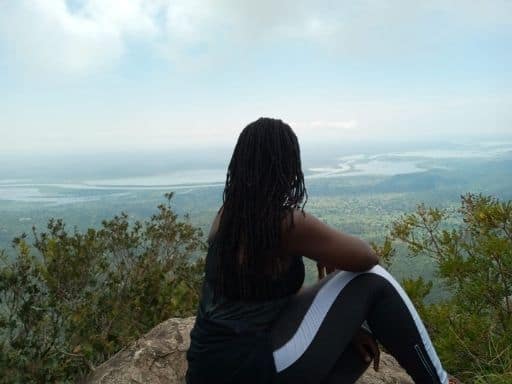
19. Wi-Polo Martyrs’ Shrine
In the town of Paimol, Agago, approximately 185 kilometers from Gulu is the Wi-Polo Martyrs’ Shrine. Wi polo in Acholi means, in heaven.
This shrine commemorates the martyrs Daudi Okelo and Jildo Irwa. These two young catechists were martyred only a few years following the foundation of the mission station of Kitgum in 1915 by the Comboni Missionaries from Italy.
It is believed that Daudi Okelo and Jildo Irwa were killed by spearing around October 18, 1918. Today Wii-Polo Martyrs’ Feast is celebrated from October 13 to October 20 with a pilgrimage and feast at the church in Paimol.
There have been a number of renovations and construction in the past six to eight years. The Martyrs’ Shrine site now hosts a presbytery, an open air alter, as well as a beautiful sculpture of two mutually embracing arches symbolizing love and mercy.
20. Zoka Forest Reserve
The Zoka Forest Reserve in Adjumani is the northernmost tropical forest in Uganda. Although it is small, it is home to a number of primate species and an endemic flying squirrel that is only found in Zoka.
The large Mahogany and Mvule trees offer a cool respite from the heat in this area. Those hoping to explore the Zoka Forest Reserve should make their plans soon. There has been an alarming amount of destruction and degradation of the forest over the past few years due to logging and charcoal burning.
Where Is Gulu, Uganda?
Located in the northern region of Uganda, Gulu is the largest city north of the Nile River.
Gulu is 108 kilometers from the border of South Sudan and less than 200 kilometers from the Democratic Republic of Congo border.
What Is The Distance From Kampala to Gulu?
The distance from Kampala to Gulu is approximately 333 kilometers.
How To Get To Gulu, Uganda
By Car
You can reach Gulu easily by car. If you are traveling from Kampala, you will use the Gulu-Kampala highway for a direct route to the city. Traffic getting out of Kampala can be quite chaotic, but the rest of the drive is smooth sailing.
The entire journey should take you approximately 5 hours.
By Bus
If you are looking for budget travel options, then you can take the bus or a matatu (taxi) to Gulu.
If you are in Kampala planning to travel to Gulu, you will want to head to Namayiba bus park. On the left-hand side of the bus lot, you will see a number of busses heading north. Hawkers, or the people finding customers, will try to bring you to their bus company once they know you are going to Gulu.
Generally, most of the buses are safe to travel in. Our favorite bus companies heading to Gulu are Makome, Friendship, and Larem.
By Plane
While there are no regular flights scheduled for travel to Gulu, it is possible to fly.
Eagle Air is one of the longest service airlines in Uganda. Their domestic flight schedule usually runs between Entebbe and Arua twice per week. A prearranged diversion to Gulu is possible if you would rather not charter an entire direct flight.
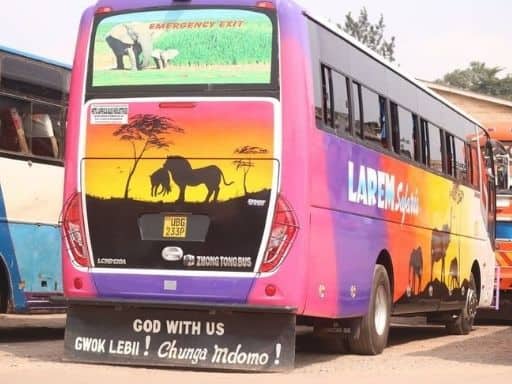
Hotels In Gulu, Uganda
Bomah Hotel Gulu
If you’re looking for a high-end stay in Gulu, Uganda, then Bomah Hotel is your best option. Aside from the great pool, there is a fully stocked gym, sauna, as well as simple spa services. They have a restaurant on-site with primarily international cuisine and large garden space on the compound to relax.
You can book your stay here.
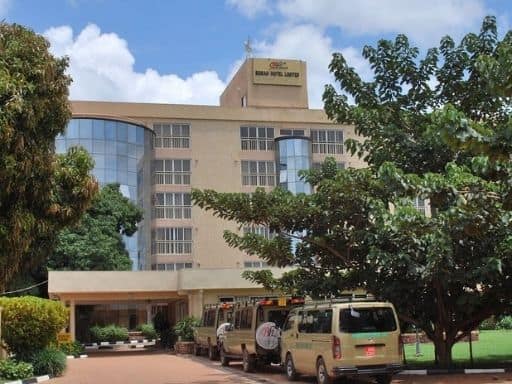
Palm Garden Guest House
If you’re looking for a quiet and private place to call home during your stay in Gulu, then we recommend Palm Garden. This guest house is outside of the business of the city but close enough if you want to have a night on the town.
There is a small restaurant on-site, and if you’re looking to dip in the pool you can walk next door to Golden Peace Hotel.
You can book your stay here.
African Roots Guest House
African Roots is a newer guest house in Gulu, Uganda, but they have created an awesome space for visitors. You will immediately notice the large grass-thatched dining area as you approach the hotel.
Everything from the hospitality to the decor will make you feel at home at African Roots. This location is quiet, but also a short walk into the heart of Gulu city.
You can book your stay here.
Northern Pearl
Northern Pearl is a newly renovated hotel in Gulu, Uganda. When you first arrive you will either be greeted by the delicious smells coming from the outdoor pizza oven or the Indian food coming out of the kitchen.
The rooms at Northern Pearl are self-contained bandas behind the main building. Inside the rooms are a bedroom, sitting room, and bathroom. There is also a garden next to the bandas where you can enjoy you can relax or enjoy your food.
You can book your stay here.
AirBnB
Alternatively, you can opt to stay at an AirBnB while in Gulu. Here are two homes that we recommend checking out:
- Private room: If you are just looking for a place to rest your head, this modern home is offered up by a known business owner in Gulu.
- Thatched home: If you want to stay in a traditional Acholi home with some modern flair, then we recommend staying at the Luo Thatch Hut in Gulu.
What Tribe Is In Gulu?
Gulu is home to the Acholi people. You can find Acholis in the districts of Agago, Amuru, Gulu, Kitgum, Nwoya, Lamwo, Pader, and Omoro in northern Uganda, as well as part of South Sudan.
The Acholi tribe is part of the larger Luo ethnic group. The Luo family is found in the Northern, Eastern, and West Nile regions of Uganda, South Sudan, and Western Kenya.
One of the most successful African literary works, Song of Lawino, was written by Okot p’Bitek, a member of the Acholi tribe.
What Language Do They Speak In Gulu?
English is one of the official languages of Uganda. It is widely spoken and understood in Gulu, especially in larger businesses, restaurants, hotels, and tourist areas.
Acholi is the local language spoken in Gulu. It’s not expected that you should speak Acholi while visiting here, but if you’re planning to engage with people while using public transportation, learning a few greetings or phrases could be helpful and warmly welcomed.
How Is The Weather in Gulu, Uganda?
Gulu, Uganda has a tropical climate meaning that it has high temperatures throughout the year and generally high humidity and precipitation.
The wet seasons in Gulu fall between April to May and August to October. There is an average of 16-18 rainy days during these months. Temperatures during the day average around 22.6°C/72.6°F.
The dry season runs from December to February. January and February are the warmest months of the year with temperatures averaging 27° C/80.6° F. Although, temperatures can easily reach 33°C/91°F or higher during the dry season.
June to August are the coolest months of the year with an average of 22°C/71.6°F.
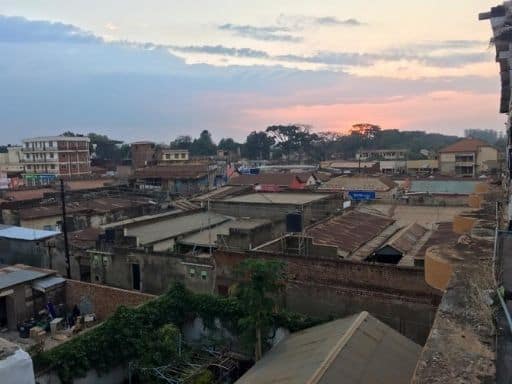
Where To Visit Next?
While you are in the northern region of Uganda, we highly recommend making your way to Kidepo Valley National Park for stunning scenery and wild safaris. Alternatively, you could make your way south to Murchison Falls National Park for a safari and Nile River boat cruise.
We also recommend heading east towards Mbale for a trip to Sipi Falls and getting your hands on some delicious coffee.
If you’re looking for less touristy areas and a lot of remote nature, you can also head to the West Nile region of Uganda.
The Wrap-Up: Gulu, Uganda
Despite its hard history, Gulu, Uganda is a thriving city today. The people are exceptionally welcoming in Gulu, and you’ll likely find this city much easier to navigate and get around than the capital of Kampala.
Make you’re way to northern Uganda using our guide, and you won’t miss a thing!
